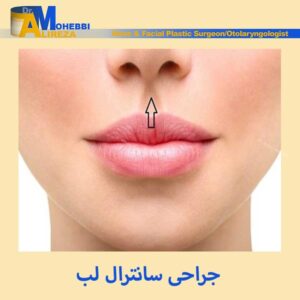Alireza Mohebbi1, Hadi Ghanbari2, Hamid Reza Sohrabi3,Arezoo Farjamnia4. Medical Journal of Islamic Republic of Iran, Vol. 25, No. 1, May 2011, pp. 8-10
Introduction
The most important function of the nose is respiration a complex phenomenon related to different nasal cavity in various races [1-3].This complex phenomenon can cause different description of nasal opening sensation [3]. Evaluation of abnormal nasal resistance needs to assess nasal air flow and resistance in different races objectively which can be achieved by Active anterior rhinomanometry (AAR) [3,4]. This method also can assess the effect of medical and surgical treatment objectively before and after therapeutic modalities, and the effects of different subjective thresholds can be omitted so that normal nasal airway resistance in different races needs to be determined. This is the first study of NAR mean innormal Iranian population. The aim of this study was to evaluate the NAR mean in normal Iranian sample and its relation to factors such as sex, age, height, weight and smoking.
Methods
One-hundred adult volunteers with more han eighteen years old ages with no history fatopia, systemic disease, without signifiant nasal anomaly in physical examinationnd drug consumption in preceding 2 weeks nrolled in study, with cross-sectional mehod to evaluate the nasal resistance by acve anterior rhinomanometry. Their NAR measured before and after decongestantgent in different pressures (75,150,300 Pasal) in right and left nasalcavity in inspiraon and expiration by GMI-NR6 rhinomaometer attached to two outflow airways and ne outflow pressure sensor with one anteior mask for receiving data for processing with soft ware that has instructed by GMI Company. Their information such as age,sex, height, weight and smoking and pressure in right and left nasal cavity were evaluated with SPSS 12 software statistically analyzed.
Results
Of 100 adult individual 54 (54%) were male and 46 (46%) female with mean age 38/1 ±16/3 yr. 10% were smoker, with mean weight of 68/9±12/8 kg and mean height 164/4 ± 9/8 cm. The mean NAR in 150 Pascal in inspiration before decongestion in right side was 0/88 ± 0/69 and left side 0/9±0/57 pas/ cm2 /sec. The mean NAR in 150 Pascal in expiration before decongestion in right side was 0/95±0/72 and left side 0/95±0/57 pas/ cm2 /sec. The mean total NAR in 150 Pascal in inspiration before decongestion was 0/38 ± 0/17 and expiration 0/41±0/27 pas/cm2 /sec. The mean NAR in broms point in inspiration before decongestion in right and left side 35/6±16/4 and 36/6 ± 14/7 and in expiration in right and left side 37/2±17/2 and 38/6±15/2 pas/ cm2/sec. The mean NAR in right side in 75 Pa was 0/69±0/53 and left side 0/74±0/46 pas/ cm2 /sec. In 300 Pa mean NAR raised to 1.06±1.05 in right side and 1.06±0.85 pas/ cm2 /sec in left side. NAR was significantly decreased after decongestion in all pressure and in left with total (NAR) (P-value<0/001)
Discussion
In this study total NAR in 150 pas was 0/38±0/17. In similar study by Cole and others in 800 normal adults in 150 pas, mean total NAR was 0/33 pas /cm2/sec [5].
In the other study in UK, in 103 adult with 150 pas resistance was 0/65 and with 75 pas resistance 0/24 pas [6]. That shows greater NAR in English population relative to Iranian population. Also total resistance was reported from 0/27 to 0/43 pas. The differences between mean resistances studied in various countries could be due to differences in race and especially in facial anatomy. Similar to previous study, in this study the mean total NAR and resistance in right and left side were greater in expiration than inspiration [8-10]. Thus attention to respiratory phase is critical. The cause of difference in resistance between inspiration and expiration is the effect of nasal turbinates in diminishing resistance that is differs in inspiration and expiration [11]. In this study, similar to some of previous study, and the NAR showed no significant differences between males and females [5,6] but in studies with greater population the NAR was greater in females than males [9]. This study and other studies [6,12,13] showed no correlation between NAR and age and weight. In another study on 192 pediatric NAR increased with increasing age [14]. There was no correlation between smoking and the NAR, and nevertheless some of previous studies reported increase of resistance due to smoking [9]. However small percent of smoker adults in our study might be caused by negative correlation with resistance [6].
Conclusion
In this study like others all calculated resistances in inspiration and expiration, of right and left side were measured after use of decongestant and all of them significantly decreased.
Finally the limits of this study can be operative bias and limitation population under study. Eventually, the objective of NAR tests is important in evaluation of intranasal diseases and deformities and also in medical and surgical treatments. For measurement of NAR mean,determination of resistance in any race and population is necessary, and this evaluation need to be done on greater population and extensive ranges.
Acknowledgments
We are very thankful from Mohammad Farhadi the chairman of the department of ENT research center, Rhinology group and also rhinospirometry department for helpful support.
References
- Williams Pl, et al: Gray’s anatomy: the anatomical basis of medicine and surgery. 39 the ed. Churchill Livingstone, 2005.
- Moore KL: clinically oriented anatomy. 4thed. Lippincott Williams and Wilkins, 1999.
- Cummings CW, et al: Cummings otolaryngology- head and neck surgery. 4th ed. Elsevier Mosby, 2005.
- Hirschberg A: Rhinomanometry: an update. J otol rhinol laryngol 2002; 64:263-267.
- Cole P: stability of nasal airflow resistance. Clin otolaryngol 1989; 14:177-182.
- Suzina AH, Hamzah M, Samsudin AR: Active anterior rhinomanometry analysis in normal adult. Malays. J laryngol otol 2003; 117: 605-608.
- Jones AS, Lancer JM, stevens jc, Beckingham E: nasal resistance to airflow. J laryngol otol 1987; 101:800-808.
- Kenyon GS: phase variation in nasal airways resistance assessed by active anterior rhinomanometry. J laryngol otol 1987;101:910-916.
- Shelton DM, Eiser NM: evaluation of active anterior and posterior rhinomanometry in normal adults. clin otolaryngol 1992; 17:178-182.
- Jones NS, Kenyon GS: Topical nasal steroids in non-atopic perennial rhinitis:subjective symptom, scores and objective measurement of nasal resistance by active anterior rhinomanometry. J laryngol otol 1988; 102: 1095-1098.
- Elad D, Liebenthal R, Wenig BL, et al. Analysis of air flow patterns in the human nose. Med Biol Eng Comput. 1993; 31:585-592.
- Virkkula P, et al: the effect of nasal obstruction on outcomes of uvolo-palato–pharyngoplasty. Acta otolaryngol 1997; 529:195-198.
- Dessi P, et al: effects of heavy smoking on nasal resistance. Acta otolaryngol 1994; 114:305.
- Zapletal A, et al: Nasal airflow and resistance measured by active anterior rhinomanomtry in healthy children and adolescent. Pediatric pulmonology 2003; 33(3): 174-180.






